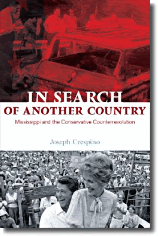She applied the "page 69 test" to her new novel, The List, and reported the following, starting with the text from page 69:
Visit Tara Ison's website and read an excerpt from The List.“Don’t tell me how I’m being.”
“You’re being a fucking Venus Fly Trap. Just stop it. Just shut the fuck up.”
“Don’t talk to me like that.”
“Oh, look,” says Stu. “They’re bringing a tram around. You guys coming to the—”
“Let’s just leave,” says Isabel. “There isn’t any point. I don’t want to be here. Let’s just go home.”
“You sure? You ready to cross this one off? Item 9? I don’t want to get home and find out this didn’t count or something. Do you mutually agree?”
“Yes, fine, I mutually agree.”
“The list,” Al offers to Stu, in explanation.
“Oh,” he says.
“We’re just going to go,” Isabel says to Stu. “It was nice meeting you.”
“Yeah,” he says. “Listen, Al, if you change your mind, call Teal. She’ll set up time for us with the guys, and we’ll talk, okay? But no pressure. I mean, only if that’s what you want to do. If it feels good for you now, you know? Or call me…” he glances at Isabel, “…even if you just need to talk, right?”
* * *
Back in film school, when he and Jules were briefly, erratically, going out – that phrase isn’t right, but they never came up with a better one, although she liked “fuck buddies” – she showed up once at his and Griff’s apartment with a plastic dropcloth and an industrial-sized bottle of storebrand baby oil, and the key to a syphilitic-looking motel on Cahuenga near Universal. She’d picked up the idea from some article on lesbian bed death, she told him: “How to Keep The Edge Alive” between you and your lover. He didn’t know whether to be hurt or honored that she felt they were suffering from lesbian bed death, but then she said she’d never have the
Ah – page 69 of The List. It’s an oddly critical moment in this love story, actually – prior to this, mismatched but madly-in-love couple Isabel and Al have decided to make a list of 10 things to do together before finally breaking up. Starts out fine and fun – but soon goes awry. They’ve just completed Item #9 (first half of p. 69, above), where they’ve had a huge fight, and run into an old work friend of Al’s (Stu). Isabel and Al are now barely speaking to each other. And yet they feel compelled to keep going…. (A metaphor for the relationship as a whole, of course.)
They’re about to do Item #10, a seemingly fun sexual encounter (something Al did with a previous girlfriend, Julie, many years earlier.) The scene continues in the tone of the above – explicitly sexual, angry, emotionally detached. But this “Item” takes a significant turn in the coming pages – Isabel and Al, in fact, will wander into a greater intimacy, tenderness, and understanding than they’ve ever experienced together before. And so what was supposed to be “the end” (Item #10) simply raises the stakes of this relationship. Now they really can’t bear to let go - and so decide to let The List continue for a while longer….
While the above might be a bit confusing, and Isabel and Al don’t seem to have a lot of “page time” (the characters of Stu and Julie probably seem more significant than they are), I think the central theme of the novel is indeed hinted at: the intensity and complexity of romantic and sexual love, its conflicts and confusions, its horrors and hopes.
Check out the complete list of books in the Page 69 Series.
--Marshal Zeringue
















